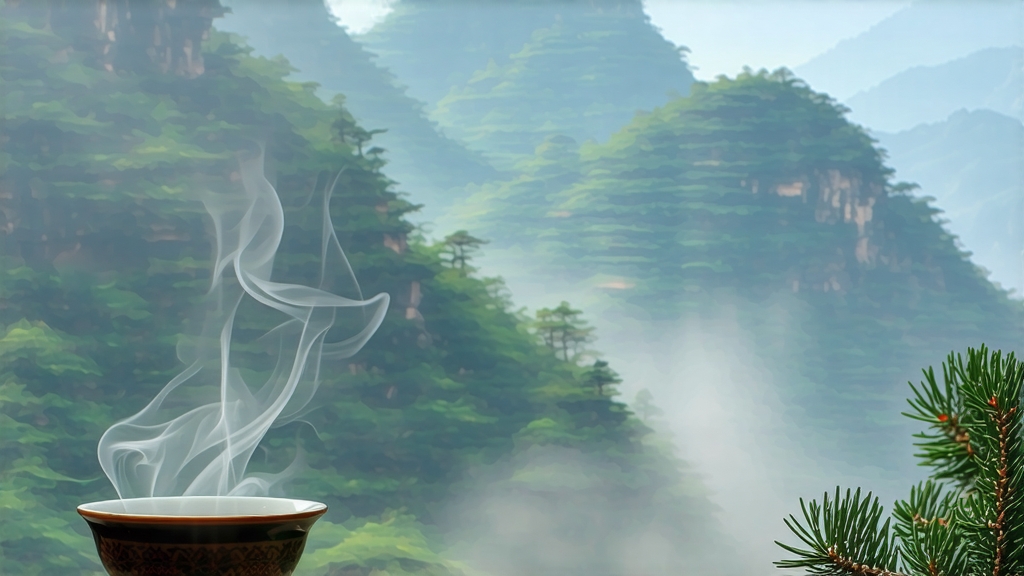
Ask most tea lovers to name a Chinese black tea and they will answer “Keemun” or “Yunnan Gold.” Few realize that the very first black tea ever created—long before those famous styles emerged—was Lapsang Souchong, born in the cool, mineral-rich folds of the Wuyi Mountains in northern Fujian. Revered in 17th-century London as “bohea,” later dismissed by some as merely “smoky,” this misunderstood leaf is now enjoying a quiet renaissance among specialty drinkers who prize its layered sweetness, wine-like body, and the story it carries of Chinese ingenuity.
History: From Misty Crags to London Coffeehouses
Local legend places the birth of Lapsang Souchong around 1568, when a passing army requisitioned tea baskets from Xingcun village farmers. To dry the leaf quickly before the troops returned, the farmers spread it over pine fires; the resulting amber liquor, kissed with resinous smoke, delighted the first Dutch traders who carried it to Europe. By 1604 the Dutch East India Company listed “Bohea Souchong” at twice the price of green tea, and by 1662 Catherine of Braganza’s dowry chest made it fashionable at the English court. The name itself encodes quality: “souchong” refers to the fourth and fifth leaves—larger, tougher, and more aromatic after smoking—while “lapsang” derives from the local dialect “La” (pine) and “sang” (wood). For two centuries Wuyi caravans supplied the world; then colonial plantations in India and Ceylon copied the style, and Lapsang slipped into relative obscurity. Today a handful of family workshops in Tongmu Guan, a protected core zone within the Wuyi UNESCO reserve, keep the original craft alive under strict geographic-origin rules.
Terroir: Why Only Tongmu Tastes Authentic
The Wuyi range is a karst landscape of weathered cliffs, short sun hours, and constant mist. Day-night temperature swings slow leaf growth, concentrating polyphenols and amino acids. Soils are yellow-brown laterite laced with quartz and granite fragments, giving the tea a natural minerality that balances smoke. Crucially, Tongmu sits inside a national forest where only indigenous Masson pine and Chinese red pine may be used for firing; elsewhere, the same cultivar and technique yield harsher, turpentine notes. Thus, authentic Lapsang Souchong is inseparable from its birthplace—much like Champagne grapes.
Cultivars: Beyond the Smoke, the Leaf Matters
Most production relies on the Wuyi Cai Cha (“colorful tea”) population—a mixed group of seed-propagated bushes with purple-tinged young leaves. Small amounts of premium Jin Jun Mei, a bud-only offshoot, are also smoked to create “Lapsang Golden,” but the classic grade remains the strip-style souchong plucked after the Qingming festival when leaves have gained heft yet retain sweetness. Farmers look for a leaf-to-stalk ratio of 9:1 and a gentle curl that will hold smoke without crumbling.
Craft: Four Centuries of Smoke and Fire
Withering begins within minutes of plucking. Leaves are spread 3 cm deep on bamboo trays inside a charcoal-warmed loft; windows are cracked so pine-scented mountain air can circulate. After four to six hours the leaf loses about 60 % moisture, turning velvety to the touch. Rolling follows, but unlike orthodox black teas that aim for tight coils, Lapsang is only lightly bruised—enough to rupture cell walls for oxidation yet preserve the flat, strip shape that will later absorb smoke evenly.
Oxidation takes place in wooden boxes lined with wet cloth; the leaf piles are kept at 24 °C and 85 % humidity for three to four hours, turning from jade to copper. The critical step is smoking and drying combined. A pine fire is built in a sunken pit; heat and smoke rise through a brick chamber where the tea rests on sieves 1.5 m above the flames. Craftspeople control temperature by sprinkling water on the logs, creating a cool smoke (35–40 °C) that drifts for eight to ten hours. The process is repeated up to three times over consecutive days, with rest intervals that allow residual moisture to migrate outward. Finally, the tea is “scented” with a short burst of hotter pine smoke (60 °C) to fix the aroma